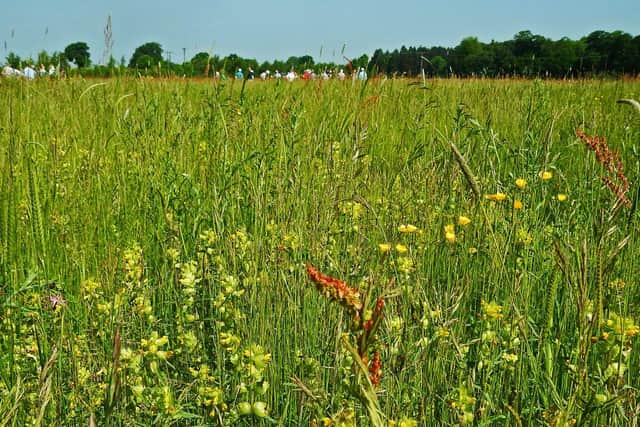York 'woodmeadow' created from a former barley field and "effectively biodiversity free" records more than 1,000 insects including three high conservation species
The pioneering Three Hagges Woodmeadow, created by the Woodmeadow Trust from a former barley field on the Escrick Estate in 2012, is a mixture of woodland and meadow which combines the biodiversity of both habitats.
Scarce in the UK, woodmeadows were common in Scandinavian and Baltic countries up until the last century with more than 60 flora species per square metre being recorded.
Advertisement
Hide AdAdvertisement
Hide AdProject leader at the Woodmeadow Trust, Ros Forbes Adam said it showed woodmeadows could be a way to fight the “catastrophic decline in biodiversity”.


“Wildlife has moved into our woodmeadow at a speed that’s taken experts by surprise, even though the site is in its infancy and won’t mature for many years,”
“This is a real cause for optimism. It shows that woodmeadows could help reverse the UK’s catastrophic decline in biodiversity, if created on a large scale and connected to other habitats to form wildlife corridors.
Mrs Forbes Adam said the Trust’s aim is to see a woodmeadow established in every parish in the country.
Advertisement
Hide AdAdvertisement
Hide AdThree Hagges Woodmeadow is a centre of scientific research, with national experts monitoring mammals, birds, insects, spiders, reptiles, amphibians, wildflowers, trees and soil.
Annual surveys carried out since 2015, have so far formally recorded the presence of 1,113 invertebrate species – including a wide variety of ladybirds, moths, beetles, grasshoppers and spiders.
A “wealth” of insect pollinators have also been counted, including 34 bee species, 26 butterfly species, and 43 hoverfly species none of which the Trust said would have been found on the site when it was a barley field.
Butterflies include the dingy skipper, a species usually found on chalky soil and an unexpected find in Escrick along with marbled white, and purple hairstreak.
Advertisement
Hide AdAdvertisement
Hide AdBees include the red mason bee and wool carder bee, and bumblebees such as the tree bumblebee and red-tailed bumblebee.
The Trust said the aim of the woodmeadow is to “attract and boost” species which should be widespread in the UK, but there have also been some “unusual” sightings including the yellow-legged Clearwing, an insect rarely documented since records began in 1883, and the third-ever recent British record of the ruby-tailed wasp Chrysis corusca.
Three Hagges Woodmeadow is open for people to visit and also holds courses to promote more awareness of biodiversity. The habitat is maintained and boosted by agricultural methods, including haymaking and grazing, while the trees, once they are large enough, will be coppiced for poles and charcoal.
The Project came about as part of the Queen’s Diamond Jubilee celebrations when the idea for a woodland was suggested by Charlie Forbes Adam and taken a step further by his son, Beilby who proposed making flowers part of the design, leading to the woodmeadow.
Some 10,000 trees and shrubs have been planted along with fine grass and wildflowers on the 25-acre site.
Comment Guidelines
National World encourages reader discussion on our stories. User feedback, insights and back-and-forth exchanges add a rich layer of context to reporting. Please review our Community Guidelines before commenting.